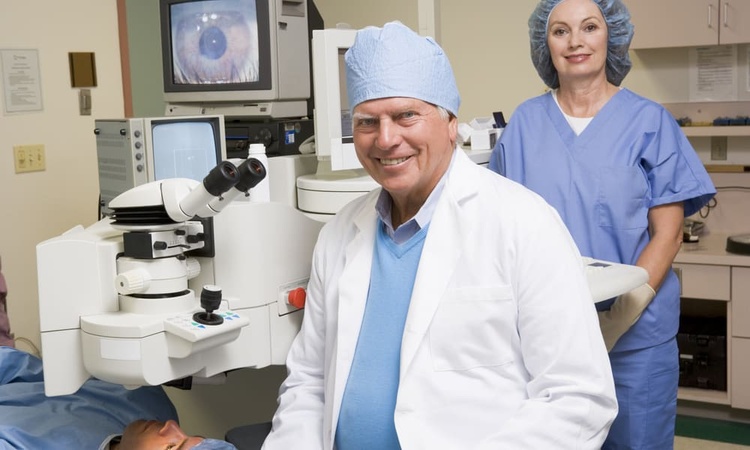Unlocking the Art of Nose Reshaping: A Comprehensive Guide to Rhinoplasty
Rhinoplasty, commonly known as a "nose job," is a surgical procedure that reshapes the nose, enhancing facial harmony and addressing both aesthetic and functional concerns. This transformative cosmetic procedure has gained popularity worldwide, offering individuals the opportunity to refine their appearance and boost their self-confidence. Whether you're considering rhinoplasty for cosmetic reasons or to improve breathing difficulties, understanding the intricacies of this surgical art is crucial.

The surgery is typically performed under general anesthesia and can take anywhere from one to three hours, depending on the complexity of the case. Surgeons may use either an open or closed approach, with the open technique involving a small incision on the columella (the strip of tissue between the nostrils) for better visibility and access to the nasal structures. The closed approach, on the other hand, involves incisions made entirely within the nostrils, resulting in no visible external scarring.
What are the potential benefits of undergoing rhinoplasty?
Rhinoplasty offers a multitude of benefits that extend beyond mere aesthetics. For many individuals, the procedure can significantly enhance their overall facial appearance, creating a more balanced and harmonious profile. This improved facial symmetry often leads to increased self-confidence and a more positive self-image. Patients frequently report feeling more comfortable in social situations and experiencing a boost in their personal and professional lives.
Beyond cosmetic improvements, rhinoplasty can also address functional issues that affect breathing and quality of life. Correcting a deviated septum or other structural abnormalities can lead to improved airflow, reduced snoring, and better sleep quality. For those who have suffered from chronic sinus problems or difficulty breathing through their nose, rhinoplasty can provide much-needed relief and enhance overall respiratory function.
How long does recovery from rhinoplasty typically take?
The recovery process following rhinoplasty is a gradual journey that requires patience and careful adherence to post-operative instructions. Initially, patients can expect some swelling, bruising, and discomfort around the nose and eyes. A splint or cast is typically placed on the nose to protect and support the new structure during the initial healing phase.
Most individuals can return to work or school within one to two weeks after surgery, though strenuous activities and exercise should be avoided for several weeks. It’s important to note that while the majority of swelling subsides within the first few months, the final results of rhinoplasty may not be fully apparent for up to a year as the nose continues to settle and refine.
During the recovery period, patients are advised to sleep with their head elevated, avoid wearing glasses that rest on the bridge of the nose, and protect their nose from sunlight to prevent discoloration. Regular follow-up appointments with the surgeon are crucial to monitor healing progress and address any concerns that may arise during recovery.
Are there any risks or potential complications associated with rhinoplasty?
As with any surgical procedure, rhinoplasty carries certain risks and potential complications that patients should be aware of before deciding to undergo the surgery. While serious complications are rare, especially when the procedure is performed by a board-certified plastic surgeon, it’s important to understand the potential risks involved.
Some of the possible complications include bleeding, infection, adverse reactions to anesthesia, and changes in skin sensation. In rare cases, patients may experience breathing difficulties or unsatisfactory aesthetic results that may require revision surgery. It’s also possible for the nasal structures to shift during the healing process, potentially affecting the final outcome.
To minimize risks, it’s crucial to choose a highly qualified and experienced surgeon, follow all pre- and post-operative instructions carefully, and maintain open communication with your medical team throughout the recovery process. Discussing your medical history, expectations, and any concerns with your surgeon during the consultation phase is essential for ensuring the best possible outcomes.
How much does rhinoplasty typically cost?
The cost of rhinoplasty can vary significantly depending on several factors, including the surgeon’s experience, the complexity of the procedure, geographic location, and facility fees. In general, patients can expect to invest a substantial amount in their nose reshaping journey.
| Provider Type | Average Cost Range | Factors Affecting Cost |
|---|---|---|
| Board-Certified Plastic Surgeon | $5,000 - $15,000 | Experience, reputation, location |
| Hospital-Based Surgery | $6,000 - $20,000 | Includes facility fees, anesthesia |
| Outpatient Surgery Center | $4,000 - $12,000 | Generally lower overhead costs |
Prices, rates, or cost estimates mentioned in this article are based on the latest available information but may change over time. Independent research is advised before making financial decisions.
It’s important to note that rhinoplasty is typically considered a cosmetic procedure and is not covered by health insurance. However, if the surgery is being performed to correct functional issues like breathing problems, insurance may cover a portion of the costs. Always consult with your insurance provider and plastic surgeon to understand the full financial implications of the procedure.
When considering rhinoplasty, it’s crucial to prioritize the surgeon’s qualifications and the quality of care over cost alone. Choosing a highly skilled and experienced surgeon can help ensure better results and reduce the likelihood of complications or the need for revision surgery, which can ultimately save money in the long run.
Rhinoplasty remains one of the most popular and transformative cosmetic procedures available today. By carefully reshaping the nose, skilled surgeons can enhance facial harmony, boost self-confidence, and improve quality of life for many individuals. While the decision to undergo rhinoplasty should not be taken lightly, for those who choose to pursue it, the procedure offers the potential for significant aesthetic and functional improvements. As with any surgical procedure, thorough research, realistic expectations, and open communication with a qualified surgeon are key to achieving satisfying results and embarking on a successful rhinoplasty journey.






